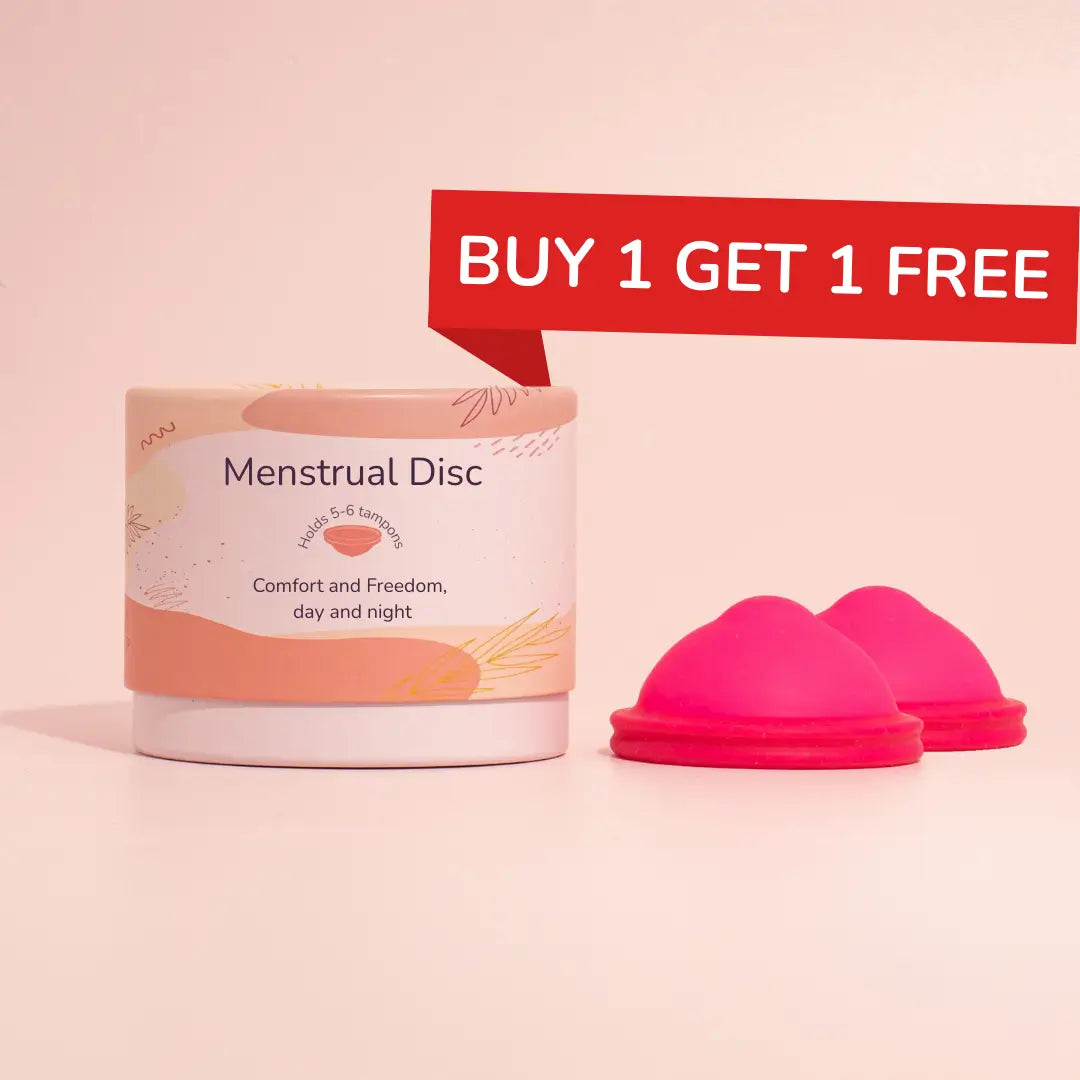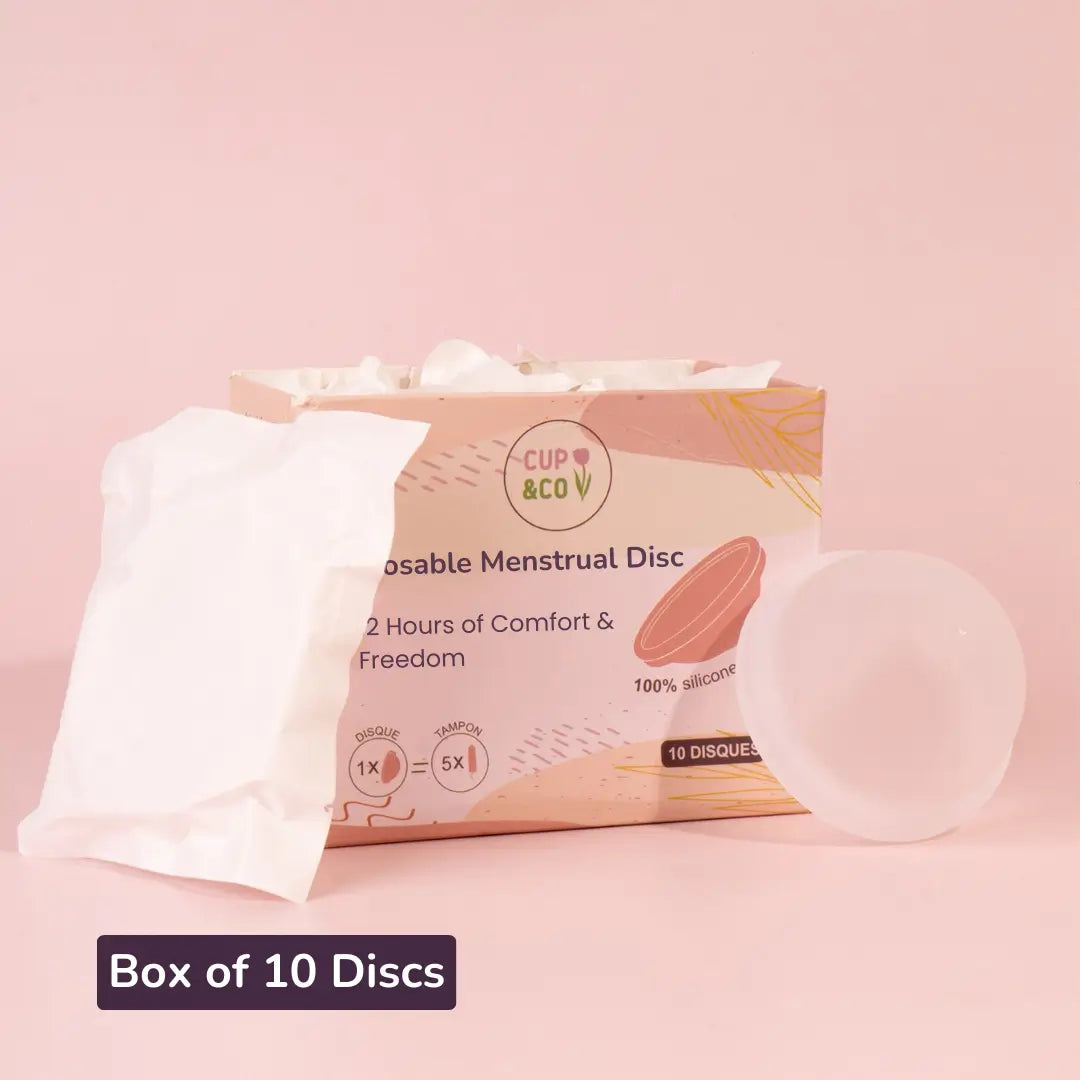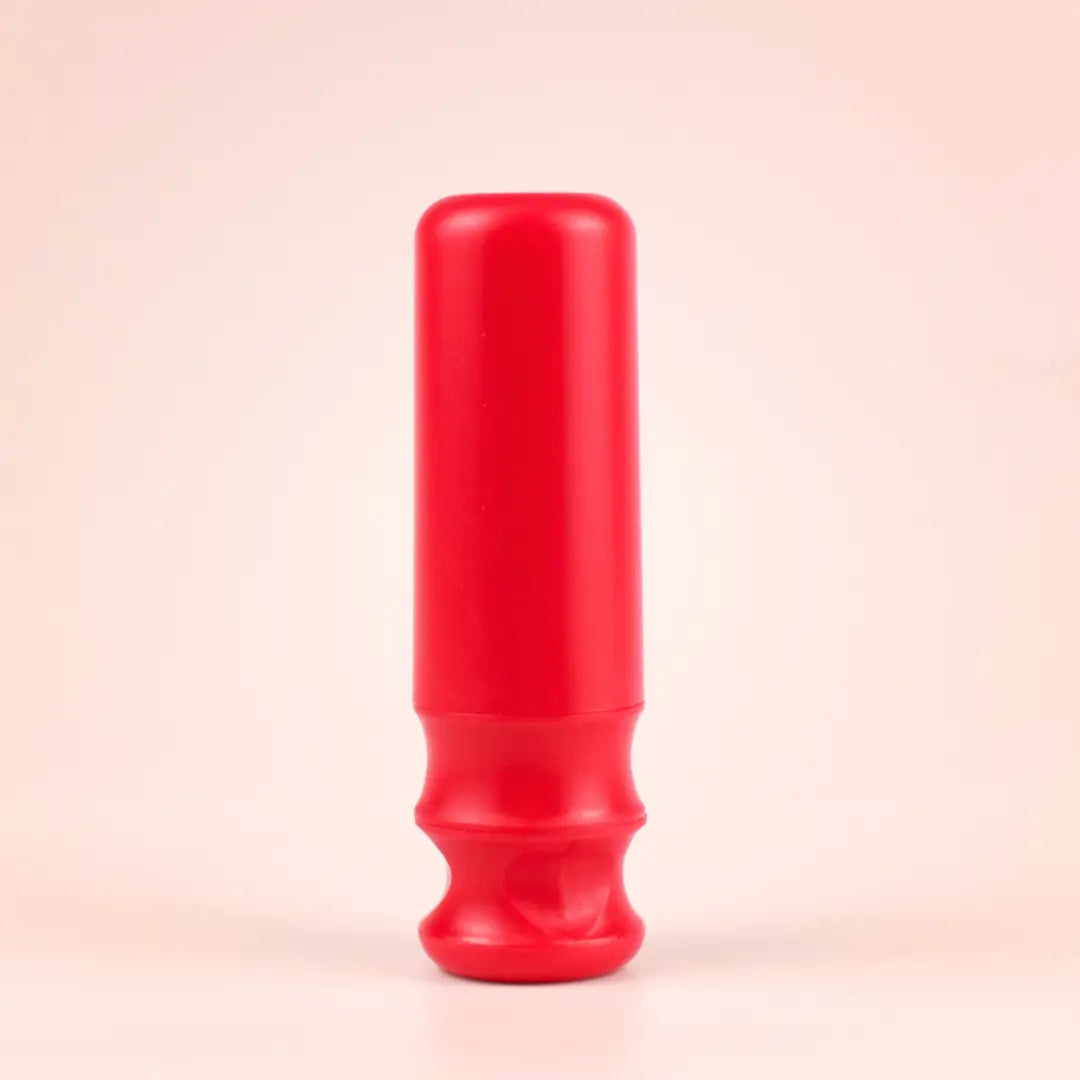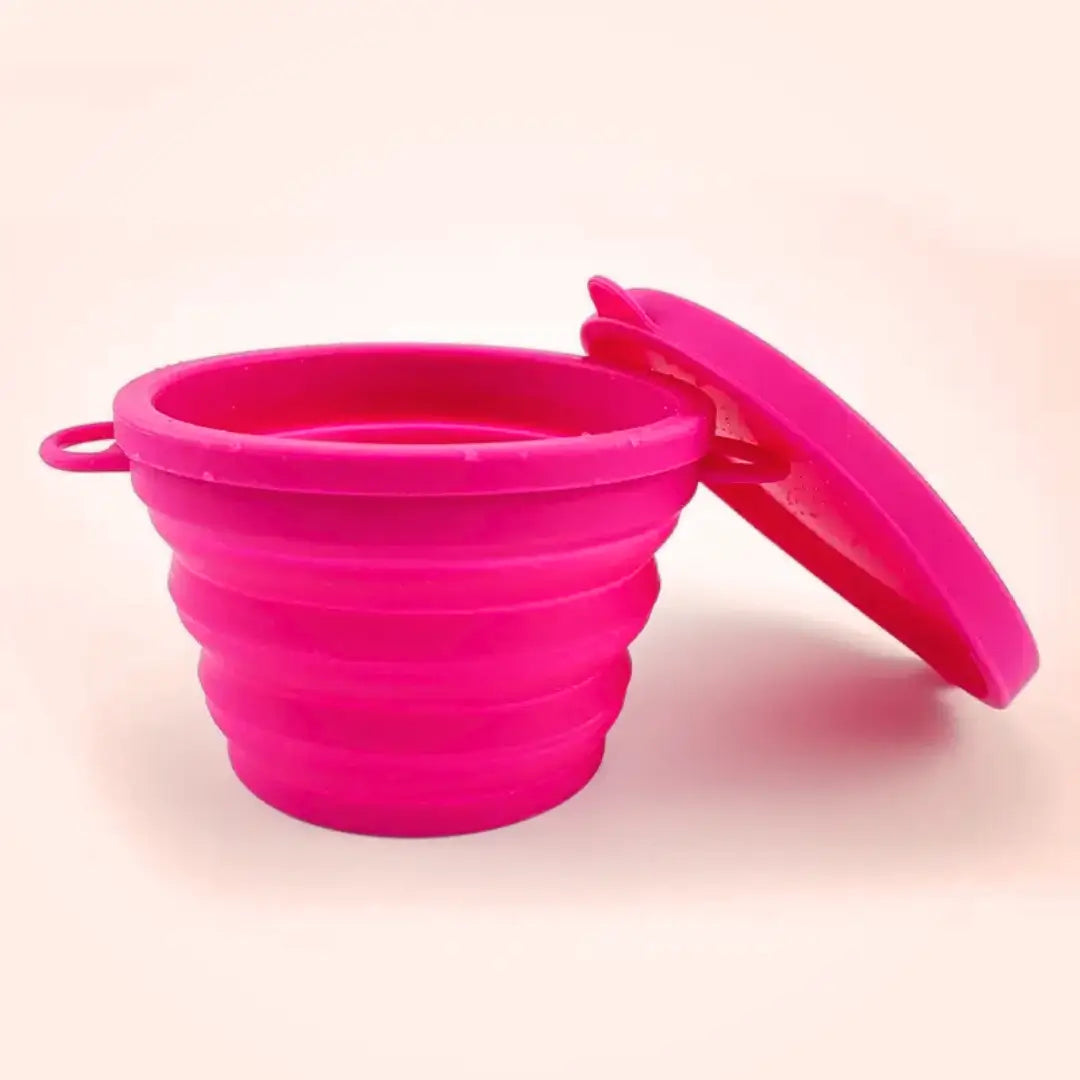Menstrual cups are often seen as a healthier alternative to tampons and in many ways, they are. But like any internal period product, improper use can lead to discomfort or even health issues.
Here are the 6 most common problems linked to menstrual cups:
- Toxic Shock Syndrome (TSS)
- Allergic reactions
- Infections
- Urinary issues
- Risk of IUD displacement
- Pain and discomfort
In this article, we break down each of these risks, what causes them, and how to avoid them so you can use your cup with confidence. 😊
Toxic Shock Syndrome (TSS) and Menstrual Cups
Toxic Shock Syndrome is a very serious illness, but the good news is that it's extremely rare and easily preventable when using a menstrual cup correctly.
What is Toxic Shock Syndrome (TSS)?
TSS is a rare infection caused by a bacteria called Staphylococcus aureus, which is present in the blood. Around 1% of women naturally carry this bacteria, and it's usually harmless and asymptomatic.
But when blood is left sitting inside the body for too long, as can happen with a tampon, menstrual cup, or disc, the bacteria can produce a toxin that enters the bloodstream and causes a severe reaction.
More info on TSS on the official National Institutes of Health (NIH) website.
Early symptoms of TSS to watch for:
Be on alert if you experience flu-like symptoms within 3 to 5 days of using your menstrual cup. Remove it immediately and seek medical attention.
Common warning signs include:
- 🌡️ Sudden high fever
- 🤢 Nausea or vomiting
- 💩 Diarrhea
- 💪 Muscle aches or weakness
How to prevent TSS when using a menstrual cup:
To minimize your risk:
- Empty, rinse, and reinsert your menstrual cup every 6 to 8 hours (for tampons, every 4 to 6 hours).
- Don't wear your cup for more than 12 hours, even if your flow is light.
- Always wash your hands before and after handling your cup.
- Make sure to fully sterilize your cup between each cycle.
By following these hygiene guidelines, your risk of TSS stays extremely low and you can continue using your menstrual cup safely and with peace of mind.
Risk of Infections
Menstrual cups don't directly cause infections, but vaginal infections can develop if bacteria are introduced from your hands or if the cup isn't properly cleaned.
To minimize the risk of infections like yeast infections or bacterial vaginosis, be sure to follow these hygiene tips:
- 👐 Wash your hands thoroughly before inserting or removing your cup.
- 💧 Rinse your cup before and after each use to remove blood and potential bacteria.
- 🧼 Sterilize your menstrual cup at least once per cycle by boiling it or using a proper sterilizing method like the Cup&Co sterilizer for menstrual cup.
👉 More info on how to care for your menstrual cup
Allergies Related to Menstrual Cups
Most menstrual cups are made from medical-grade silicone and are free from harmful chemicals, which significantly reduces the risk of allergies. That's especially true for our Cup&Co bio menstrual cup 🌿.
Unlike latex, which is more likely to trigger allergic reactions, silicone is generally considered hypoallergenic.
However, it's still possible to be allergic to almost anything, so if you experience symptoms like:
- 🛑 Redness around the vaginal area
- 💢 Intense itching
- 🔥 A burning sensation
You might be having an allergic reaction to the material. If you're already using a medical-grade silicone cup and still having issues, try switching to a cup made from TPU or consider trying another type of period protection.
Risk of IUD Expulsion
In recent years, several studies have shown that using a menstrual cup may increase the risk of IUD (intrauterine device) expulsion. If your IUD becomes dislodged or removed accidentally, it may no longer provide reliable contraception, which increases the risk of unplanned pregnancy 🤰.
We've written a full article explaining the causes of this risk and the precautions to take when using a menstrual cup with an IUD.
If you wear an IUD, we recommend switching to a menstrual disc instead, a safer alternative to the menstrual cup that's more compatible with intrauterine devices.
Irritation and Cramps
Menstrual cups can sometimes cause discomfort or pain, especially for those who are more sensitive. One of the main causes is the suction effect, which may intensify menstrual cramps or create pain during removal. 😣
Other factors can also lead to irritation, including:
- 🚫 A long or firm stem that pokes the vaginal walls
- 🚫 Vaginal dryness, making insertion or removal uncomfortable
- 🚫 Improper positioning, which can cause pressure or leaks
For more details, check out our full guide on menstrual cup discomfort, where we share tips to make your cup experience more comfortable and pain-free.
Urinary Issues with Your Menstrual Cup
If you're having trouble urinating or constantly feel the urge to pee while using a menstrual cup, it might be due to the pressure the cup puts on your bladder or urethra. This pressure can partially block urine flow or cause a constant feeling of discomfort.
Most of the time, once you remove the cup, you should be able to urinate normally. This issue is more common with cups that are too firm or too large for your body.
In this case, try switching to a softer cup, which will apply less pressure on your bladder and urethra.
Another great option is to try a menstrual disc, which sits higher in the vaginal canal and doesn't press against your bladder, making it a more comfortable alternative.
Common Questions About Menstrual Cup Risks
Can a menstrual cup cause a prolapse or damage the cervix?
No, even with the suction effect, menstrual cups do not cause uterine prolapse or damage the cervix.
If you forget to break the suction seal before removing the cup, it may cause discomfort, but it won't lead to serious injury.
👉 Learn more about how to properly remove a menstrual cup.
However, if you already have a prolapse or weakened pelvic floor muscles, a menstrual cup may not be suitable for your anatomy.
Do gynecologists recommend menstrual cups? 👩
According to doctors, menstrual cups are not more dangerous than other period products. You just need to follow the basic hygiene rules, like washing your hands before use and changing your cup every 6 to 8 hours.
In fact, many gynecologists even prefer them over tampons because they're free of harmful chemicals.
Can I sleep with a menstrual cup?
Yes, you can sleep with your cup overnight.
Just keep in mind that it can be hard to remove and rinse it every 6 to 8 hours while you sleep, which might slightly increase the risk of toxic shock syndrome (TSS) if you carry the staph bacteria.
If you have a very heavy flow, we recommend using a menstrual disc instead. It can hold more and may be a more comfortable option for overnight use.







